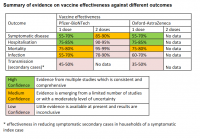littlebabyjesus
one of Maxwell's demons
I don't get the accelerating of second doses. That comes after new evidence that both Pfizer and az benefit from the 12 week delay. They judge that this is better than accelerating first doses? I'd like to see the workings and assumptions behind that.





